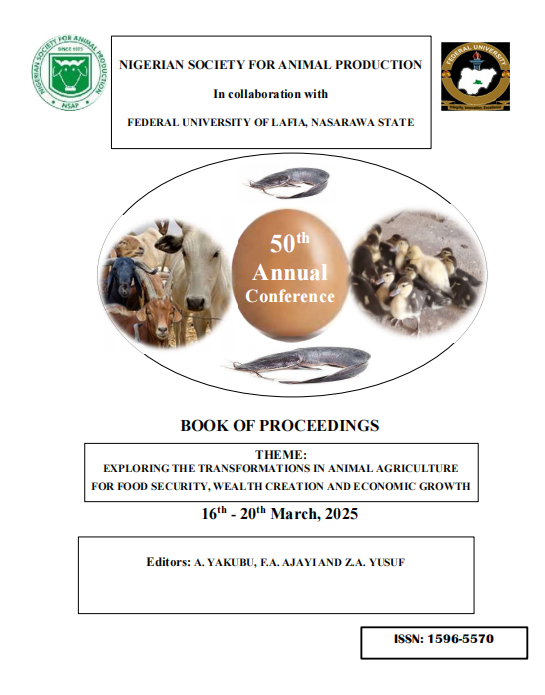EXPLORING THE AGRONOMIC YIELD POTENTIAL OF NEWLY INTRODUCED JUNCAO GRASS (Pennisetum purpureum) IN SHIKA, NIGERIA
Keywords:
Agronomic, Yield, Juncao grass, ShikaAbstract
Juncao grass, a multifunctional crop developed through innovative agricultural technology, has gained significant attention for its agronomic potential in addressing food security, environmental sustainability, and rural development. Juncao technology, pioneered by Professor Lin Zhanxi of Fujian Agriculture and Forestry University (FAFU), China, utilizes specific grass species for mushroom cultivation, livestock feed, soil conservation, and bioenergy production, the high nutritive value, adaptability, and ecological benefits of Juncao grass make it a promising crop for sustainable agriculture. A study was conducted at the Introduction Plot of feeds and nutrition research programme, National Animal Production Research Institute, Shika, Zaria, to explore a preliminary investigation on the nutritive potential of Juncao grass (Pennisetum purpureum). The grass was planted in a Randomize Complete Block Design with three replicates in 5m x 5m plots. Planting was done through stem cuts with 2 to 3 nodes at angle 450 into the ground. Data on plant height, leave length, leave with, tiller number, stem diameter and dry matter yield were taken from each plot before the first and second harvest. The plant height was significantly (P<0.05) higher (332.5cm) in second harvest. Similar trend was observed for stem diameter (7.03cm) and total dry matter yield of 12.21t/ha. The leave length (113.3cm), leave width (5.43cm), number of leaves (25) and tillers (23) were higher significantly (P<0.05) during the first harvest. The result revealed a serious concern to explore the potential yield of Juncao grass as feed for ruminants in Nigeria.

